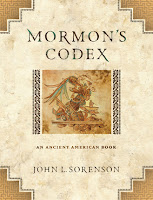Lesson 30 in Gospel Doctrine includes the story of King Josiah and the re-discovery of the book of the law. You will have this lesson in another week or two, depending on where you live.
Here's the summary:
2 Chronicles 34. After Hezekiah’s son and grandson rule in wickedness, Hezekiah’s great-grandson Josiah becomes king of Judah. Josiah destroys the idols in the kingdom and repairs the temple (34:1–13).
The book of the law is found in the temple and read to Josiah, who weeps when he learns how far the people have strayed from the law (34:14–21).
https://www.lds.org/manual/old-testament-gospel-doctrine-teachers-manual/lesson-30?lang=eng
You can see the parallel to Letter VII.
During Joseph Smith's lifetime, he made sure Church members everywhere knew about President Cowdery's eight gospel topics essays, which he published as letters. Each is important, but Letter VII unambiguously declares that the hill Cumorah of Mormon 6:6 is in New York.
Letter VII was frequently republished, but the last official republication was in 1899 in the Improvement Era (Joseph F. Smith of the First Presidency was editor). Since then, Letter VII has been lost, like a lot of other things about Cumorah. Certain scholars have successfully censored and suppressed the teachings of the prophets, including Letter VII.
But now it has been rediscovered in the Joseph Smith Papers. You can read the Cumorah part right here: http://www.josephsmithpapers.org/paper-summary/history-1834-1836/90
Like Josiah and his people, today we are thrilled to re-learn what the prophets have taught all along about the hill Cumorah in New York. Letter VII is causing many Church members to reject the traditions of their fathers regarding the Mesoamerican/two-Cumorahs theory (M2C).
As in Josiah's day, there are some people who don't want to know what the prophets have taught because it threatens their craft, their income, or even their reputation (for the M2C scholars who have spent their careers developing and defending M2C).
The biggest challenge for these scholars is acknowledging they've been wrong because they rejected the prophets.
But most members of the Church still believe the prophets and embrace Letter VII once they learn about it.
_____
The Church has a great video that explains the Josiah account.
The parallel to Letter VII seemed obvious to me, so I made a little video to explain it.
https://www.youtube.com/watch?v=e4_71A8DCsg&feature=youtu.be
Enjoy.
And when your Gospel Doctrine class studies Josiah in Lesson 30, be sure to bring up the parallel to Letter VII today.
Here's the summary:
2 Chronicles 34. After Hezekiah’s son and grandson rule in wickedness, Hezekiah’s great-grandson Josiah becomes king of Judah. Josiah destroys the idols in the kingdom and repairs the temple (34:1–13).
The book of the law is found in the temple and read to Josiah, who weeps when he learns how far the people have strayed from the law (34:14–21).
https://www.lds.org/manual/old-testament-gospel-doctrine-teachers-manual/lesson-30?lang=eng
You can see the parallel to Letter VII.
During Joseph Smith's lifetime, he made sure Church members everywhere knew about President Cowdery's eight gospel topics essays, which he published as letters. Each is important, but Letter VII unambiguously declares that the hill Cumorah of Mormon 6:6 is in New York.
Letter VII was frequently republished, but the last official republication was in 1899 in the Improvement Era (Joseph F. Smith of the First Presidency was editor). Since then, Letter VII has been lost, like a lot of other things about Cumorah. Certain scholars have successfully censored and suppressed the teachings of the prophets, including Letter VII.
But now it has been rediscovered in the Joseph Smith Papers. You can read the Cumorah part right here: http://www.josephsmithpapers.org/paper-summary/history-1834-1836/90
Like Josiah and his people, today we are thrilled to re-learn what the prophets have taught all along about the hill Cumorah in New York. Letter VII is causing many Church members to reject the traditions of their fathers regarding the Mesoamerican/two-Cumorahs theory (M2C).
As in Josiah's day, there are some people who don't want to know what the prophets have taught because it threatens their craft, their income, or even their reputation (for the M2C scholars who have spent their careers developing and defending M2C).
The biggest challenge for these scholars is acknowledging they've been wrong because they rejected the prophets.
But most members of the Church still believe the prophets and embrace Letter VII once they learn about it.
_____
The Church has a great video that explains the Josiah account.
The parallel to Letter VII seemed obvious to me, so I made a little video to explain it.
https://www.youtube.com/watch?v=e4_71A8DCsg&feature=youtu.be
Enjoy.
And when your Gospel Doctrine class studies Josiah in Lesson 30, be sure to bring up the parallel to Letter VII today.

















